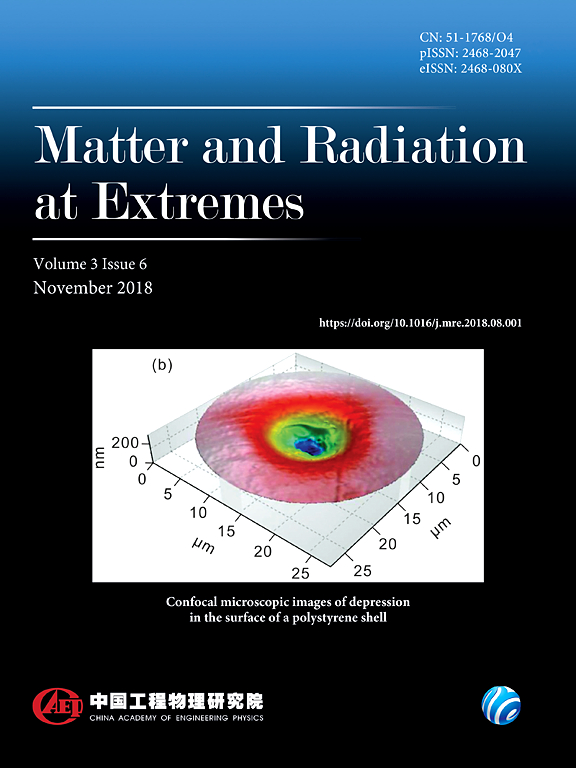高电荷电子束在10厘米纳米粒子辅助尾流场加速器中加速到10 GeV
IF 4.7
1区 物理与天体物理
Q1 PHYSICS, MULTIDISCIPLINARY
引用次数: 4
摘要
聚焦在等离子体上的强激光脉冲可以激发非线性等离子体波。在适当的条件下,来自背景等离子体的电子被困在等离子体波中并加速到超相对论速度。这个方案被称为激光尾流场加速器。在这项工作中,我们展示了一个激光尾流场加速实验的结果,该实验使用了一个拍瓦级的激光来激发尾流场,以及纳米粒子来帮助将电子注入尾流场的加速阶段。我们发现,一个10厘米长的纳米粒子辅助激光尾场加速器可以产生340 pC, 10±1.86 GeV的电子束,其卷积能量扩散的rms为3.4 GeV, rms散度为0.9 mrad。它也可以产生能量较低的束,在4-6 GeV范围内。本文章由计算机程序翻译,如有差异,请以英文原文为准。
The acceleration of a high-charge electron bunch to 10 GeV in a 10-cm nanoparticle-assisted wakefield accelerator
An intense laser pulse focused onto a plasma can excite nonlinear plasma waves. Under appropriate conditions, electrons from the background plasma are trapped in the plasma wave and accelerated to ultra-relativistic velocities. This scheme is called a laser wakefield accelerator. In this work, we present results from a laser wakefield acceleration experiment using a petawatt-class laser to excite the wakefields as well as nanoparticles to assist the injection of electrons into the accelerating phase of the wakefields. We find that a 10-cm-long, nanoparticle-assisted laser wakefield accelerator can generate 340 pC, 10 ± 1.86 GeV electron bunches with a 3.4 GeV rms convolved energy spread and a 0.9 mrad rms divergence. It can also produce bunches with lower energies in the 4–6 GeV range.
求助全文
通过发布文献求助,成功后即可免费获取论文全文。
去求助
来源期刊

Matter and Radiation at Extremes
Physics and Astronomy-Atomic and Molecular Physics, and Optics
CiteScore
8.60
自引率
9.80%
发文量
160
审稿时长
15 weeks
期刊介绍:
Matter and Radiation at Extremes (MRE), is committed to the publication of original and impactful research and review papers that address extreme states of matter and radiation, and the associated science and technology that are employed to produce and diagnose these conditions in the laboratory. Drivers, targets and diagnostics are included along with related numerical simulation and computational methods. It aims to provide a peer-reviewed platform for the international physics community and promote worldwide dissemination of the latest and impactful research in related fields.
 求助内容:
求助内容: 应助结果提醒方式:
应助结果提醒方式:


